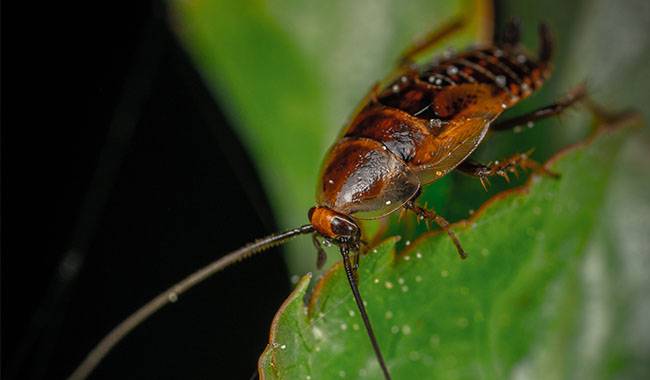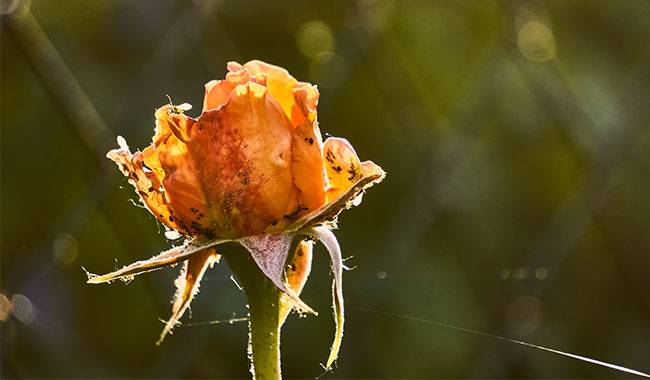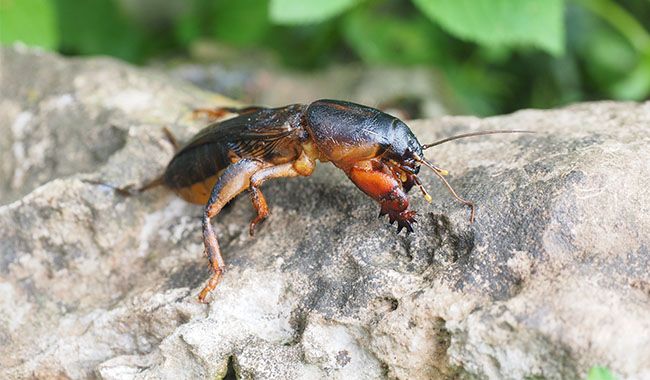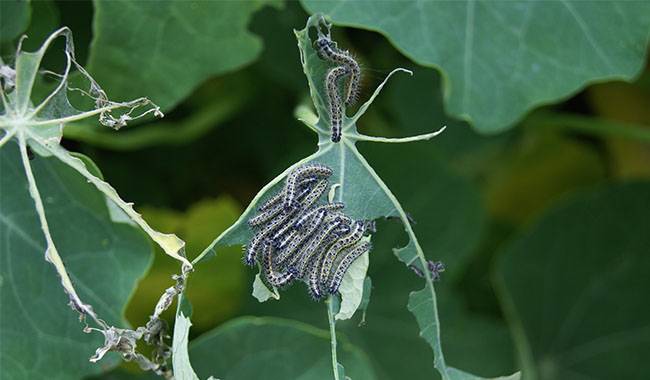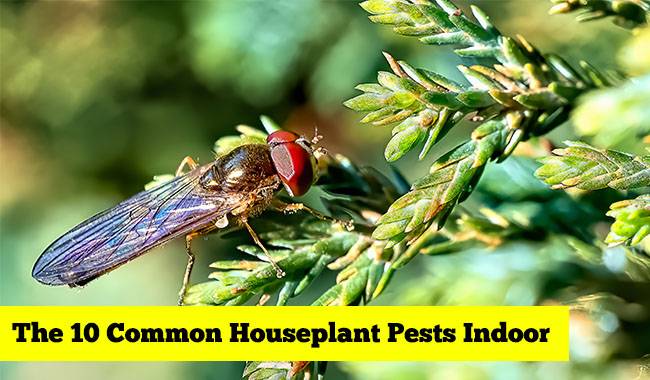
Strong and healthy plants are resistant to most pests. Even in indoor forms, they will select weak shrubs. Soil and above-ground pests, of which sucking species predominate, are equally harmful to popular indoor ornamentals and flowering plants. Aphids and spider mites can cause growth stagnation and considerable damage to decorations. Often they even destroy plants. And each pest behaves in its way, adapting quickly and reproducing at an alarming rate. Fortunately, the control measures for all common houseplant pests are very similar.
Spider mite
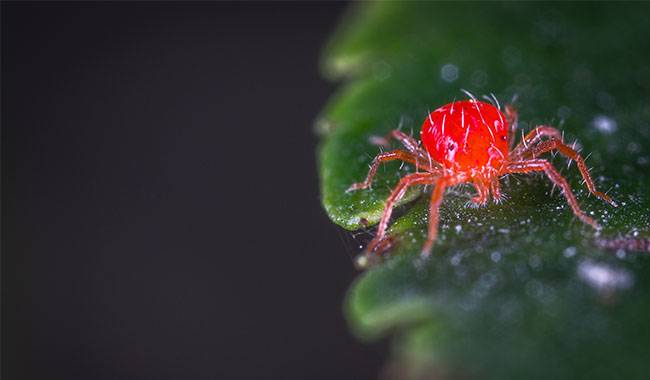
Sucking pests are Spider mites – a member of the spider family. They are the most common pest of home potted plants and are particularly active in winter. In the home, at least average humidity is more of a dream than a norm. If the radiator is running half the year, it will produce an ideal dry environment in which Spider mites will thrive (as well as most other pests).
The different species of Spider mite are almost indistinguishable under indoor conditions, but the most common is the red, or common Spider mite (Tetranychus urticae). Small “octopuses” up to ½ mm in diameter are barely visible even with a magnifying glass. But the thinnest spider webs, which cover the stems and leaves, are much more visible.
Spider mite pulls the web to where it attaches itself to the plant. Spider mite lives mainly on the back of the leaves. Affected plants are weakened, and the leaves become pale, gray, and dry to the touch, and in some species, they turn yellow and shrivel.
More Related: Protect the seedling from spider mites
Aphid
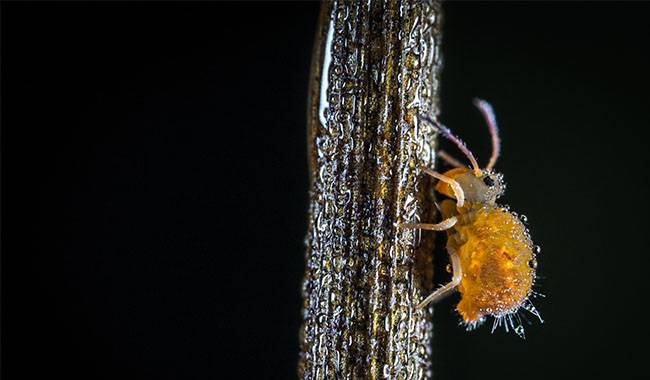
Aphids (Aphidoidea) are small pests with long bodies (up to 2 mm). They form large colonies and are easily recognized by the naked eye. Females do not have wings, but males have wings. Colors vary from classic light green to brown, yellow, reddish and black, in different species. But there is no need to diagnose individual Aphid species, as they are equally harmful to indoor crops.
They carry a clear sticky coat on which sooty fungi can quickly settle. Aphid often spreads viral diseases and is easily seen on weakened plants.
Aphid prefers everything “young” leaves, shoots, flower buds, and stem tops, depriving the plant of sap. As a result, affected parts of the plant quickly twist, warp, wilt, turn yellow and die. The more Aphid spreads, the more the plant becomes stunted and wilted.
Aphid is another pest that also prefers dry air. There are also soiled leaves.
More Related: 5 berry bushes where aphids must survive
Thrips
Thrips are the most dangerous pests and take a surprising amount of time to recover their ornamental qualities. They do not form large colonies and can barely emerge over a long period of time.
Transparent white or slightly yellow, with elongated bodies up to 2 mm long and glossy wings with black stripes, Thrips are jokingly referred to as “flying insects.” Nearly all Thrips species occur in houseplants, but the major Thrips are sac Thrips, tobacco Thrips, and gladiolus Thrips. Thrips reproduce rapidly, with larvae reaching maturity in 2-4 weeks.
Adults are fast-moving and jump quickly. But Thrips are usually recognized by the consequences of sucking sap from leaves: silvery-white dots appear and proliferate at micropores. Gradually, silvery-yellow irregular spots cover everything in a distinctive mosaic pattern. Discolored leaves and flowers turn brown and then die. Black clods can also be seen when viewed under magnification. Thrips prefer the reproductive organs of flowers and often expose themselves by shedding pollen (especially on violets). Thrips also thrive in dry air and are brought in from outside.
Diaspididae
Diaspididae are brown, though much larger looking, pseudomoths equally dangerous and nearly impossible sucking pest enemies that require persistence and vigilance. They are dangerous to all types of houseplants – even cacti and orchids.
Diaspididae are easily recognized by their round, shiny brown waxy shields that protect their eggs as they suckle on the leaves. Only young, newly hatched individuals move around the plant, crawling in search of a suitable anchor point. If infested, white or yellow spots appear on the leaves, and the buds and leaves gradually become depleted and shriveled. A sweet, sticky scum covers the plant even before visible traces and, over time, the sill and surroundings are covered.
Diaspididae is brought in from outside. Favorable factors – overfeeding of nitrogen, dry air, sudden changes in temperature, lack of light, wrong watering.
Whiteflies
Whiteflies(Whitefly), also known as whiteflies, are dangerous in almost all stages. As soon as you touch an infected plant, they fly around aggressively. These mother-of-pearl white miniature wings are up to 2.5 mm long and covered with waxy white pollen, which can be easily detected from their activity. There is also breeding speed. The females lay many eggs on the back of the leaves. The larvae cause the most damage.
Whiteflies can be guessed not only from flying specimens. Yellow spots and rapid defoliation, and sticky excrement are also important characteristics of these insects.
Whiteflies prefer hot and unventilated closed rooms.
More Related: Controlling whiteflies is the basis of greenhouse prevention
Sciaridae
Sciaridae is a small black and gray insect up to 1.5 mm long with very narrow bodies and transparent wings. They are dangerous to houseplants in the larval stage – translucent, black-headed, segmented, legless, gnawing, developing on decaying organic matter, and devouring the roots. The larvae are visible in the soil.
The fungal mosquitoes crawl out of the soil when the pot is shaken. Damage to the roots can lead to sickly-looking plants that do not flower and wilt.
Sciaridae always enters the plant from the outside. A favorable environment is an acidic soil, moist and cool. They are most often a nuisance in winter. And they are particularly fond of African violets.
Mealybug
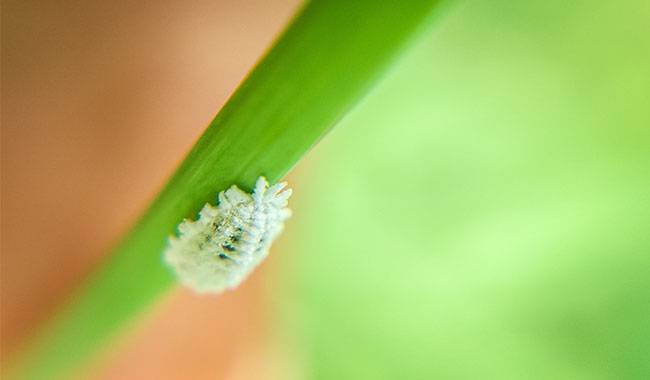
Among the sucking insects that can go unnoticed for long periods of time-consuming plants, we have to mention Mealybug. There are dozens of dangerous species for indoor plants, although the most important are the greenhouse Mealybug (Pseudococcidae), bristlecone caterpillars, citrus, bamboo, grapevine, seaside, root, and Australian Mealybug.
At 3 to 10 mm long, the oval-shaped females, with powdery ash across their flat bodies, unusual thread-like tendrils, and short many legs, are more conspicuous than the winged fly-like males. However, more easily recognized and more frequently noticed are the egg sacs that resemble lint blocks. The wings are mainly hidden in the leaf axils, and only with time do the white tufts reveal their presence.
Plants infested with Mealybug will appear sluggish and droopy. Growth initially slows and then stops completely. The sticky nectar will kill the plant simultaneously with the sooty fungus and damage the roots and above-ground parts.
Mealybug thrives in hot and high humidity environments.
More Related: Mealybug-preventive and control measures
True weevils
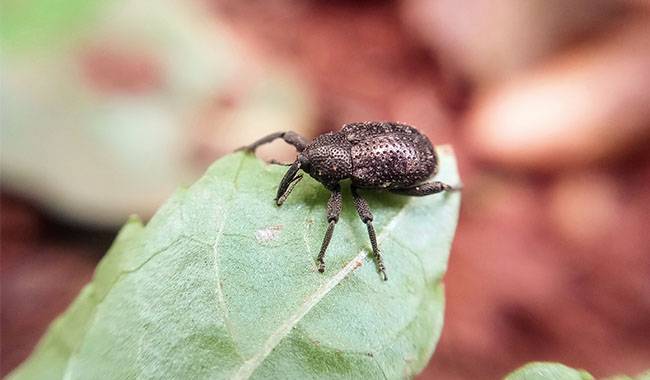
True weevils or Curculionidae are annoying, insidious bugs named for the elongated front of their heads. Gray or reddish, often spotted, and a few millimeters long with long legs and tendrils, they lay eggs in flower buds, allowing the larvae to devour the buds (and the roots if they fall into the soil) while the adults nibble on the leaf margins and petals of the blooms.
True weevils are dangerous if you take your home potted plants outside. They are particularly fond of rhododendrons.
Roundworms
Roundworms (Nematoda) – tiny, colorless parasites up to 1.5 mm long – are often found too late to be effectively controlled. After all, there are no obvious specific signs of infestation. Dwarfism, sluggishness, and deformities are often mistaken for the effects of improper watering or fertilization. Until it is too late, the plants begin to shrivel and gradually die.
Because Roundworms have a very short developmental cycle of up to 30 days, it spreads very quickly. Even under frost conditions, the larvae persist in the soil for many months.
Three types of Roundworms can be found on houseplants: soil Roundworms (root gall Roundworms), leaf Roundworms, and stem Roundworms. The latter two show discolored, translucent spots, thinning, parchment-like, twisted leaves, and necrotic spots on parts of the shrub. On the other hand, root Roundworms often go undetected until replanting, at which point the gnawed tissue and swollen galls that form in these areas are difficult to replace.
The source of Roundworms is untested, poor-quality soil.
Rhizoglyphus echinopus
Rhizoglyphus Echinops is the main enemy of all bulbous and tuberous plants, capable of destroying a collection of seasonal stars. The translucent, glossy, milky white roots of Rhizoglyphus Echinops are incredibly hardy: even when the substrate is completely dry and cold, they do not die but simply go into “hibernation.”
Once in the soil, Rhizoglyphus Echinops quickly damages the base of the bulb. They erode the tissue, biting deeply and laying huge clusters of eggs in the gaps. Infestation can also be suspected from indirect signs such as deformities, uneven leaf color, and twisted flower stems. But you can’t be sure of an infestation without digging the plant up.
Like Roundworms, Rhizoglyphus Echinops can enter the house through untested soil. And with improper storage and disinfection of planting materials.
Use one control strategy to correspond to different pests
The first thing to do is to isolate the plants, shower them with warm water, wash the leaves with soap solution, remove the insects by hand, and create the most hostile environment possible for the pests (increasing air humidity for terrestrial pests and drying the substrate for soil pests). Sometimes, simple laundry soap or manganese solutions can also eliminate pests.
However, if the simple methods do not work, it is necessary to use these three “steps” in sequence
- Soaking and decoction of insecticidal plants (nettle, dandelion, pepper, horsetail, tomato tops, chamomile, yarrow, tobacco, mugwort, onion, garlic, marigold, etc.).
- Biological insecticides.
- chemical insecticides – contact first, narrow range of action, if it does not work – a systemic, wide range of application.
The use of strong insecticides in indoor form is complex. Toxicity and risk must be considered and always try to solve the problem with a safe solution first.
When affected by an insect pest, plants rarely recover without damage, so do not delay pruning the damaged parts. In any case, leaves and shoots will have to be removed sooner or later.




